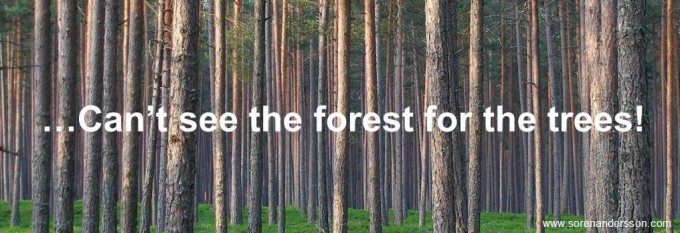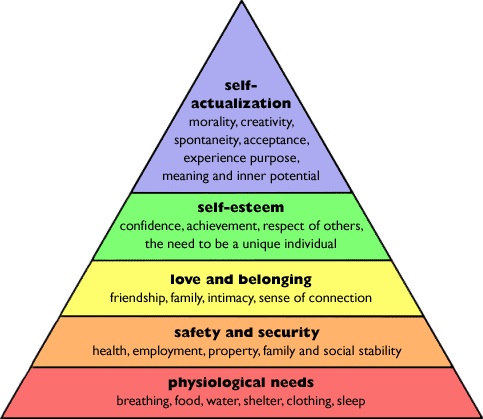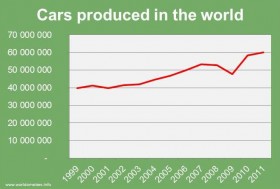
It is fantastic to see the amount of activities and initiatives that have been launched lately with the objective to move into a more sustainable society.
But still – Although increasing activity, very little has been done, addressing the main cause of our current predicament – Consumerism. In fact, if you “round-off” the overall number of “reduce-consumerism-activities” on a global scale (using no decimals) you would probably end up with a big Zero “0”… (or even less)
Most people, corporations, and governments for that matter, seem to believe that their specific activity with only a slight moderation and perhaps some kind of “reporting” or certification most certainly is sustainable just the way it is…
I don’t get it – we are currently consuming our planets resources at a rate of 156% (Link) of its capacity and increasing, the extinction of species is growing rapidly, the sea-ice in the Arctic is almost gone, water-scarcity is increasing in many regions, severe droughts, storms, flooding and wild-fires have become the new “ordinary” – it must then be “everybody else” that needs to change…
“Nothing in the world is more dangerous than sincere ignorance and conscientious stupidity.”
- Martin Luther King Jr.
The elephant has been “standing in the corner” for a long time now, and …
…Yes, it is still standing there! (Link to a previous “elephant-post“)
But what about all the current activity?
Of course the current activities are not all in vain, they definitely increase knowledge of Sustainability and the effects our current activities and society have on our planet – problem is that they deal mainly with the “symptoms” and far too little with the cause.
Many activities also assumes, more or less, that we can continue the current “western” lifestyle if we only can limit some of the negative effects from it – an assumption that, put together with the reality that we are most likely already past or at “the edge” of some of our planetary boundaries, that billions of people are to develop out of poverty in the next decades and the latest projection from UN (Link), that we will be 9.6 Billion people already by 2050 – is very UNREALISTIC.
An example – Car production
In 2010 we surpassed 1 billion cars in the world. After a 9% decline in 2009 (due to the 2008 global financial crisis), global car production immediately jumped back the following year with a 22% increase in 2010, to then consolidate at the current 3% yearly growth rate.
Vehicle penetration in China still stands at only about 40 vehicles per 1,000 people, compared with approximately 700 vehicles per 1,000 people in the mature markets of the G7.
(www.worldometers.info/cars)
If vehicle penetration in China should increase to G7-levels (“western lifestyle”), it would mean an increase from approximately 54 million cars to almost 1 billion – in China alone…and even if development would be to 50% of G7-levels it means a staggering 500 million cars more, and then add the increase in other developing countries…
The current efforts from the car industry and through government regulations to reduce fuel-consumption and thereby CO2-emissions, conversion to alternative fuels and development of hybrid and electrical cars is far from enough, the growth rate still means that emissions are going to increase significantly, “feeding” even more climate-change…
If car-manufacturers decrease the energy-consumption in their production processes, increase their CSR-activities in the factories etc. as an effort to make their process more “sustainable”, in the eye of the public, is of course good – but it is hardly going to make any over-all difference. In fact, more efficient car production would probably only reduce prices (if not added to shareholder profits) and thereby increase availability and growth-rate.
Not to mention the enormously increased need of all other resources (raw metals, plastics etc.) necessary to produce cars.
This way of calculating may be a little naive and one could of course argue that traffic-congestions in big cities and other structural concerns will regulate this evolution automatically – to a certain extent this is absolutely right, but look at the G7-countries, did it stop them from evolving to a car penetration of 700 vehicles per 1,000 people…
And while we are discussing this matter, and while the car-industry try to “seduce” the public with stories about “green and sustainable cars”, each day 166,000 more, mainly fossil-fuelled, cars are produced, creating an even bigger hurdle to “get over” once we start to realize that all those “trees actually makes up a forest”…
(And then we have not even touched on the subject of the industry providing the fossil-fuel, or the huge infrastructure-investments needed to accommodate all these cars or the costs to maintain billions of kilometres of asphalt-paved roads…)
Another reflection from my “backyard”…
 This week in Sweden the yearly event “Almedalen Week” is held in Visby. It is a political and democratic opportunity-week focusing on “societal issues” with approximately 400 events and seminaries held each day. In 2012 there were close to 17,000 visitors and 20,000 expected this year. A Sustainable Society, Energy-issues, CSR are among the subjects on the agenda.
This week in Sweden the yearly event “Almedalen Week” is held in Visby. It is a political and democratic opportunity-week focusing on “societal issues” with approximately 400 events and seminaries held each day. In 2012 there were close to 17,000 visitors and 20,000 expected this year. A Sustainable Society, Energy-issues, CSR are among the subjects on the agenda.
Words like “Competitive Advantages”, “Increased prosperity”, “Regional Growth” are quite common, advertisers in the program-leaflets span from political parties to Volvo promoting their “Super Green Car”.
The event as such is an excellent and well organized opportunity to network and debate with a lot of decision-makers and influential people from all across the Swedish society.
When browsing through the programme, which include in total 2,186 “events” it is very hard not to reflect – But what about “the Elephant”…
In a recent survey by Reputation Institute, Sweden was ranked as the #2 most reputable country in the world. In surveys on quality of life and prosperity Sweden “often” is rated among top 5. Being a Swede, I am of course proud of this, but at the same time when the ecological footprint for Sweden is calculated it shows that, if everybody on the planet should live the “Swedish Lifestyle” we need 3.5 planets – and we only have ONE!
(US lifestyle distributed worldwide would need close to 4.3 planets as a comparison)
Knowing this, and the facts are publicly available, I would have expected at least some seminaries and events focusing on Consumerism as a lifestyle and how to change it,
but NO! (well… there are actually some few events addressing our “boundaries”)
We need new “role-models”
Our current “western society-norm” has a very simple mantra – BUY, BUY, BUY…
Consumption is the answer to everything and anyone that can’t keep up is relegated to the “dump”.
The “norm” tell us;
If you feel miserable – buy something to cheer you up…
If you are happy – buy something to celebrate…
If you are in love with someone – buy her/him a present to show your love…
If you are rich – buy something to show-off (preferably expensive…)
If you are poor – buy something to show others that you are not “that poor”…
If someone is born – buy a “birthday-gift”…
If someone dies – buy funeral flowers or donate to some charity.
If you graduate from school – throw a graduation party or attend to some expensive “prom”.
…
And this goes on for ever, eagerly supported by corporations and governments since the current economic model is relying on continous economic growth to pay its debts.
When you look at how the Maslow’s hierarchy of needs, state that human motivation is based on people seeking fulfilment and change through personal growth it is amazing how many people have interpreted everything into money…
 Once you have fulfilled your physiological needs and reached a decent level of safety and security, where money plays an important role, the rest of our needs can often be met with or without money depending on how we decide to value things in life – or how our society decide for us…
Once you have fulfilled your physiological needs and reached a decent level of safety and security, where money plays an important role, the rest of our needs can often be met with or without money depending on how we decide to value things in life – or how our society decide for us…
I.e. it is difficult to buy true friendship or respect of others, experiences doesn’t have to include money and spontaneity cannot be bought…
It is somewhat tragic to see how the excessive consumerism, in many cases to fulfil the “misguided needs” in the upper half of the hierarchy, is now increasing our difficulties to fulfil the basic needs, when Climate-change, water-scarcity, availability of resources etc. are becoming more crucial and acute issues, if our society and future generations are to survive on this planet.
And at the same time we are “excelling” in the art of – “Looking the other way”
I look forward to the day when it’s cool, not to own things – then We will all be rich …
We need to define and promote new role-models based on how our society needs to be set-up if 9.6 Billion of us are going to live together on this planet, not on the extreme lives of Pop-stars, Fashion-models, Movie-stars, extremely wealthy people or corporate desire to increase growth and profits.
We are definitely at the boundaries of what our planet can provide and we need to realise the magnitude of change this will bring upon us – not continue to “Look the other way”.
It also means that we need to limit our “needs” to fit within the planetary boundaries – if not; the planet and our eco-systems will do it for us and most likely in an irreversible way.

Now – this may seem as a “doom-and-gloom” article, but I prefer to look at it this way:
If we can realize the urgency and make sure that all the 9.6 billion people can fulfil the bottom half of the “Maslow-hierarchy” the upper half is left for us all to re-engineer, this time without the current western-society-mantra.
